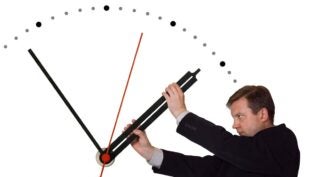
Not all leads are created equal; some leads are ready to make a purchase while others need a bit more nurturing. A good marketing strategy accounts for where a lead is on the buyer’s journey before designating a corresponding interaction from either sales or marketing. Implementing lead scoring allows us to do just this.
Nifty, right? But before you get excited about lead scoring, you must first assess if it is the right strategy for you. Lead scoring, after all, doesn’t work for everybody. Do you have enough data to implement it? Is your sales team getting enough leads to begin with? Do they have a clear path for following up and a means to receive information seamlessly? These are a couple of things to consider before you pursue lead scoring.
Even when the stars align, lead scoring is often under-utilized because of its limitations. Traditional lead scoring does not always deliver often because of the lack of data, inaccuracies or biased attributions to lead behavior.
Enter: Predictive Lead Scoring
Predictive lead scoring emerged as a means to provide marketers a better grasp on lead behavior without the inaccuracies and vagueness getting in the way. Because it vastly expands on behavioral indicators and buyer persona profiles (email opens, website visits, pages visited, job title, etc.), it is more reliable than traditional rules-based lead scoring. Through predictive lead scoring, marketers are able to see a lead’s behavioral patterns and characteristics in detail, and even uncover hidden buying signals that they would have otherwise missed with traditional lead scoring.
HubSpot Heralds Predictive Lead Scoring Feature
To quell the need for a reliable predictive lead scoring tool without delving into other site add-ons, HubSpot recently launched a Predictive Lead Scoring feature, announced at INBOUND15.
Related Article: 5 Ways to Perfect Lead Scoring with HubSpot
The goal of lead scoring is to offer a quantitative value for the likeliness a lead is to convert and become a customer. To use the tool is fairly simple. By logging into HubSpot and reviewing your lead’s conversion points, pages viewed, and content interactions, a marketer is able to assign a number of points to indicate sales readiness.
In theory, the lead scoring feature sounds extremely helpful and allows for a smoother handoff between marketing and sales, but it has actually created a great deal of headache for many HubSpot users. It’s estimated that 68% of companies on HubSpot are using lead, but only 40% of their sales departments find the data helpful. Currently, the point system is a bit ambiguous and is mostly assigned based on personal opinion, which as you can guess, varies greatly from marketer to marketer. Not to mention the entire manual process is extremely time-consuming and results can be riddled with human error.
The new and improved predictive lead scoring [insert fanfare and trumpets] is an automated system that will assign a sales readiness score based on a predetermined algorithm. Predictive lead scoring will offer a definitive number based on industry research and past consumer history that will help to remove human error/opinion standardizing scores across your target markets. The algorithm is under lock and key but HubSpot assures the most important decision factors will be explained within the tool.
Benefits of Predictive Lead Scoring
So, why should you care about predictive lead scoring? HubSpot’s new tool will analyze your company’s historical information providing data-driven methods to determine exactly who is a marketing quailed lead and who is sales ready. Finally, you can stop guessing if your leads are worthy and actually know, allowing you to invest time and money with leads that will produce the greatest ROI.
Secondly, from a strategy standpoint predictive lead scoring will help marketers evaluate the effectiveness of their entire funnel and fine-tune the process. By evaluating past performance data, marketers will have access to valuable insight into which marketing campaigns attract the highest quality leads and which do not. From there you will be able to duplicate those activities that are attracting customers and cut the campaigns that are underperforming.
And lastly, this sort of fact-based lead scoring will strengthen your sales team’s ability to close customers. With access to a clearly laid out lead to customer conversion history, sales will have a better road map on how to close leads. Pro tip: link all of this information to your CRM and watch it grow into a lean mean fighting machine.
What to Expect
During the initial rollout, the tool will be available for all HubSpot customers on the enterprise level with more than 500 organic contacts and 3 months of conversion data. Keep in mind, all customer information must be collected within HubSpot and not manually uploaded. If you don’t quite meet the minimum, don’t worry, there are talks of offering the feature on as an add-on for all other customer levels.
Predictive lead scoring is definitely a game-changer for sales and marketing teams across the country. It will offer much-needed facts and numbers to an industry overflowing with qualitative information. Gone are the days of guessing and hoping for the best. Armed with the right data, your team can attract and delight the right type of leads and keep them coming back for more! This tool may not work for every company but trying the feature is definitely a step in the right direction.











